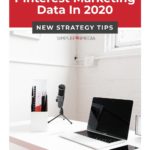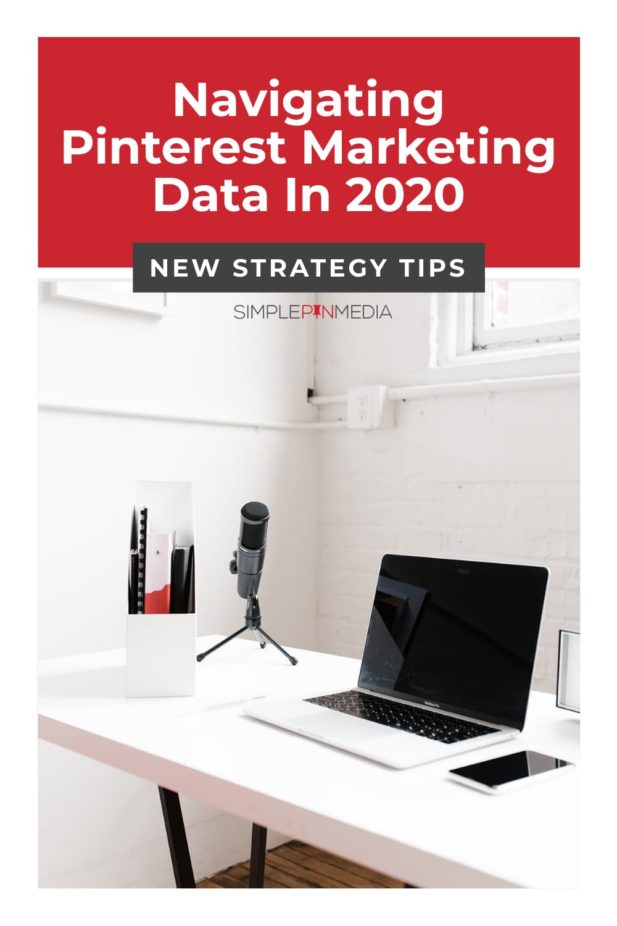You don’t need me to tell you that 2020 is a little bit of a crazy year. But you may not have thought about how this craziness affects your Pinterest marketing. Right now, data and usage are very different, as are the ways people are searching on the platform.
In today’s episode of the podcast, Jennifer Priest of Smart Creative Social joins me to talk about understanding Pinterest stats in 2020.
It takes some effort on our part to change the way we have been doing things. But we should be amenable to changing our Pinterest strategies in order to meet the Pinterest user where they are. In this episode, we cover some goals you can set and how you can reorient to the new Pinterest landscape.
These are not quick fixes. It will take hard work and time to implement changes. It can be tough to have to do the same things on repeat. Hopefully, we can encourage you to see the changes on Pinterest and come up with goals to match up with where Pinterest is.
Just a reminder that we offer several free resources to help you grow your Pinterest marketing. One of our favorites is our Pinterest Image Guide.
Your pin images are your billboard advertising on Pinterest. It’s the first thing a pinner sees and it tells them whether or not they want to click through. Check out the 8-page image guide to learn all about how to create the most engaging and click-worthy pins.
Understanding Pinterest Stats in 2020
Tailoring Your Pinterest Marketing
Jennifer Priest has been on the podcast before to talk about Pinterest Visual Search and using hashtags on Pinterest. Her posts always encourage people to use their Pinterest stats and analytics to inform where they are going.
Jennifer recently commented about the changes in the platform, and how users and searches are at an all-time high on Pinterest. But there is a trend of Pinterest marketers trying to apply old methods to new situations.
Another common issue we come across is marketers who complete trainings or gather information from other business owners and apply it to their own business without making any tweaks to the strategy or system to fit their individual biz.
Jennifer uses this fabulous analogy to explain why this doesn’t work:
You don’t try to put on jeans that you know aren’t your size just because your best friend is wearing them. You buy what works for your body size and type.
Likewise, you have to tailor your Pinterest marketing to fit your particular business needs.
Refining and Adjusting Your Pinterest Marketing
If you watch a video training that Jennifer offered two years ago, those tactics might still work even though everything on Pinterest looks different now. The tactics will just provide you with a different result. The best practices from 2018 might give you a 10% improvement now whereas, in 2018, they delivered a 100% improvement.
This is why paying attention to your Pinterest analytics is so important. Analytics show you what happened and what you can learn from it. The next steps are to take the information and refine what you’re doing.
You don’t want to just throw everything out if you find that a strategy is not working. Refining and adjusting are the most important steps. That might mean losing time or even money. But it is a learning process that will pay off once you know exactly what works for you and your ideal audience.
Pinterest Trends Changes
The biggest surprise for Jennifer when it comes to Pinterest marketing in 2020 is that Pinterest trends have been completely flipped on their head. You cannot predict anything based on previous years’ patterns.
Jennifer has posts from her DIY blog Smart Fun DIY that have been her “bread and butter” in years past that are behaving this year as she would expect. Posts on graduation and weddings are usually top performers in April, May, and June. That didn’t happen this year (for obvious reasons).
People are viewing life through a different lens right now. Homeschooling, working from home, and social distancing are all things that are being talked about, more than weddings or summer vacations.
You have to come to the realization that things being different when you think about serving your user on Pinterest.
Related: Pinterest Marketing for Travel Bloggers & Pinterest Marketing for Wedding Professionals
Don’t Be Reactionary
It can be a challenge to stay optimistic and positive when it feels like Pinterest is so unpredictable and volatile. Sponsored content has changed. Ad revenue is a lot lower and much more unpredictable. Traffic and impressions might have dipped.
You have to keep looking at what is working well. Find out why that thing is working well. You don’t want to just be reactionary.
Paying attention to your Pinterest stats is the only way to know how to keep serving the Pinterest user in the way they want to be served.
Emphasize Results Over Traffic
You need to focus on results and goals because traffic doesn’t pay the bills.
It feels good to look at those vanity metrics (like monthly viewers) and see your numbers climbing but what is your real goal? It’s selling your program or product, getting your ads in front of more people, etc.
You want Pinterest to be the entry point of your marketing funnel.
Traffic is part of your marketing but you want it to lead to conversions. If you just have people looking at your images but never clicking, you aren’t getting any results.
Stay Where You Belong
If you’re trying to gain insight into your ideal customer, there is a lot of data you can look at. Google Analytics will tell you a lot about who is looking at your Pinterest images.
You want to get into the mind of the person who will end up seeing your Pinterest images.
What are they searching for that will lead them to your content?
What do they need a solution for?
You need to think like the customer.
If you scan Pinterest’s blog you can find a lot about shopper experience and intent.
Your Pinterest presence should reflect what you have to offer to the Pinterest user. Don’t try showing up in product searches if you don’t have a product to offer. Be clear in your marketing.
You are missing opportunities if you try to show up in areas where you have nothing to offer. Show up in the places where you can serve the people searching for what you provide. You don’t want to make the user have to work hard to find the content they are looking for. You want to make it easy for Pinterest to serve up your content to the right user.
Impressions Are a Tool
Pinterest is not perfect. There are things that will be broken and confusing, and the platform will constantly be changing and evolving (here’s how you can keep up with Pinterest changes).
You need to think about this when it comes to viewing your impressions. You might look at your Pinterest stats and they might seem way down. It’s important to remove emotion and look at the data objectively.
Once you can figure out why your content is or is not showing up, dig into your analytics, and find out exactly what people are seeing. There are so many factors that can play into your content being clicked on.
After you gather all the data, it’s time to make adjustments.
There isn’t a magic number of impressions that means you’ve “made it.” Impressions are a tool that helps you know how many people are seeing your content. Knowing that number is not your end goal.
It’s always better to have 100 people on your site and have 10 people buying than to have thousands of people on your site and only have 10 people buy.
It’s not about having a huge number of people on your site, it’s about having the right people on your site.
Pinterest is going to keep changing. Get comfortable with that idea. You do yourself a disservice getting freaked out or distracted by the changes. Instead, utilize your analytics as the window into how your content will behave on Pinterest. Continue to tailor your Pinterest marketing to fit your business needs.
What have you learned from your Pinterest stats in 2020? How are you using it to change up your business methods?
As always, we would love to hear from you in the comments!
For Further Reading/Listening:










2 Comments